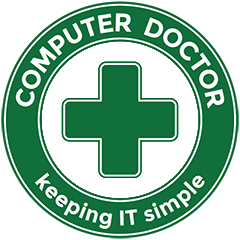Kaspersky Rescue Disk 10
Kaspersky bootable USB
Applies to Kaspersky Rescue Disk 10
If Kaspersky Anti-Virus 2012 or Kaspersky Internet Security 2012 is installed on your computer, then you can quickly record Kaspersky Rescue Disk 10 via the application interface. Kaspersky Lab 2012 products have a special tool which allows creating and recording Kapersky Rescue Disk.
In order to record Kaspersky Rescue Disk 10 to a removable USB device, perform the following actions:
Connect a removable USB device to your computer
Warning. In order to successfully record Kaspersky Rescue Disk 10 to a removable USB device, space capacity of it must be not less than 256 MB. The connected USB device must have FAT16 or FAT32 file system. If NTFS file system is installed on the device, you are required to format it in FAT16 or FAT32.
Warning. Do not use an USB device with other operating systems installed on it. It may cause incorrect booting your computer from Kaspersky Rescue Disk 10.
Download the iso image of Kaspersky Rescue Disk 10 and a special utility
Download the following utilities from the official Kaspersky Lab server:
ISO image of Kaspersky Rescue Disk 10 (196 MB)
Utility to record Kaspersky Rescue Disk 10 to USB devices (378 KB)
Record Kaspersky Rescue Disk 10 to your USB device
In order to do this, perform the following actions:
Run the downloaded file rescue2usb.exe. On the Kaspersky USB Rescue Disk Maker window, click Browse… and select the iso image of Kaspersky Rescue Disk 10 Select the required USB device from the drop-down menu. Click START. Wait until the process is complete. Click OK on the open window informing that Kaspersky USB Rescue Disk has been successfully created.
Configure the computer to boot from Removable Device
Information Use the Delete or F2 keys, to load the BIOS menu. The keys F1, F10, F11, F12 might be used for some motherboards, as well as the following key combinations:
Ctrl+Esc
Ctrl+Ins
Ctrl+Alt
Ctrl+Alt+Esc
Ctrl+Alt+Enter
Ctrl+Alt+Del
Ctrl+Alt+Ins
Ctrl+Alt+S
Information how to enter the BIOS menu is displayed on the screen at the start of the OS boot:
In the BIOS settings on the Boot tab, select loading from a Removable Drive (you can find more detailed information in the documentation to the motherboard installed on your computer).
Connect a USB-drive with the recorded image of Kaspersky Rescue Disk 10 to your computer.
Kaspersky USB Rescue Disk 10 is ready for work. You can boot a computer from it and start the system scan.
Boot your computer from Kaspersky Rescue Disk 10
Restart your computer. After reboot, a message will appear on the screen: Press any key to enter the menu.
Press any key. A loading wizard will start (you will see the menu to select the required language). If you do not press any key in 10 seconds, the computer boots from hard drive automatically.
In the start up wizard window that opens, select the graphic interface language using the cursor moving keys. Press the ENTER key on the keyboard.
Select one of the following start up methods:
Kaspersky Rescue Disk. Graphic Mode loads the graphic subsystem. Kaspersky Rescue Disk. Text Mode loads the text user interface represented by the Midnight Commander (MC) console file manager. Boot from Hard Disk. Press the ENTER key on the keyboard.
The End User License Agreement of Kaspersky Rescue Disk 10 is displayed on the screen. Read carefully the agreement. If you agree with all the statements of the agreement press the C button on your keyboard.
Once the actions described above have been performed, the operating system starts. It scans your computer for connected devices and searches for file systems of your local and removable disks. Once the operating system has started, you can start work with Kaspersky Rescue Disk 10.
If the host operating system is in sleep mode or its operation has been completed incorrectly, you will be asked to mount the file system or restart the computer.
In order to boot from the hard drive to shut down the operating system correctly, select Restart computer.
Information. If you select Continue, the application will continue mounting the file system, but there is a fairly high risk of file system damage.
Information. If you select Skip, the application will skip file system mounting. Only boot sectors and autorun elements will be scanned. There is a fairly high risk of file system damage.
Your Calgary Computer Doctor team
Posted on Oct 31, 2011

